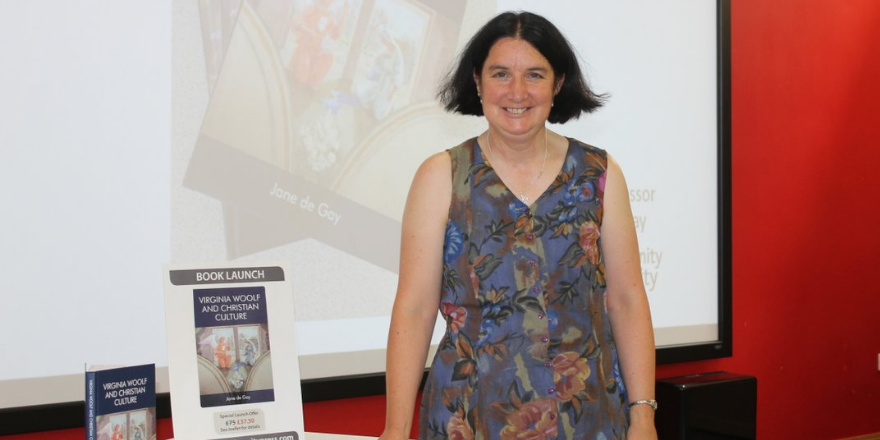
There are many ways of choosing a favourite book, but for me, the acid test is to have language powerful enough to send tingles down the spine. Virginia Woolf’s To the Lighthouse includes the most beautiful and moving lines in English literature: “Mr Ramsay stumbling along a passage stretched his arms out one dark morning, but, Mrs Ramsay having died rather suddenly the night before, he stretched his arms out. They remained empty” (Woolf, 1927).
Mrs Ramsay had been the central character of the first part of the novel, ‘The Window’ as a busy wife, mother of eight and a hostess, a friend, a philanthropist, a confidante, and a model for the aspiring artist Lily Briscoe. Everyone had admired her beauty and loved her. And now, she is dispatched suddenly and in square brackets with no explanation. The sorrow is stark.
The grief becomes even more poignant when we remember that Woolf modelled Mr and Mrs Ramsay on her own parents Leslie and Julia Stephen.
The passage I have quoted comes amidst a lyrical piece of experimental writing, ‘Time Passes’, set in an empty holiday cottage that had been home to the Ramsay family and their many guests for the first part of the novel. ‘Time Passes’ covers 10 years, including the period of the First World War that saw such loss but also resulted in positive social changes. By the final section of the novel, ‘The Lighthouse’, the stuffy Victorian world where women like Mrs Ramsay wore themselves out with childbirth, good works, and ministering to men has passed away, and the twentieth century was bringing fresh opportunities. Women like Lily Briscoe are freed to live differently: “Mrs. Ramsay has faded and gone, she thought. We can over-ride her wishes, improve away her limited, old-fashioned ideas” (Woolf, 1927).
To the Lighthouse is an excellent text to use when teaching Victorian Studies, as Woolf had a shrewd understanding of the Victorian world in which she grew up (she was born in 1882). She famously critiqued the ideology of the ‘Angel in the House’, alluding to Coventry Patmore’s poem of the same name and summing it up as: “She excelled in the difficult arts of family life. She sacrificed herself daily. If there was chicken, she took the leg; if there was a draught she sat in it – in short she was so constituted that she never had a mind or a wish of her own, but preferred to sympathize always with the minds and wishes of others” (Woolf, 1966-67).
Mrs Ramsay epitomizes the Angel in the House. As Lily reflects, “giving, giving, giving she had died” (Woolf, 1966-67).
The beauty of To the Lighthouse is its depth and richness: every time you read it; you see something new. And this is perfect for me as a lecturer and supervisor: it’s a wonderful text to share with students as there is so much to explore.
To the Lighthouse has fed my two books. In Virginia Woolf’s Novels and the Literary Past, I showed how Woolf engaged with the whole of English literature as she developed her radical modernist style. So, the passage I have quoted is a stark rejection of the lengthy death-bed scene of the Victorian novel (note how it’s in square brackets, like an aside). But it’s also an allusion to In Memoriam, by Tennyson, one of Woolf’s father’s favourite poets:
Tears of the widower, when he sees
A late-lost form that sleep reveals
And moves his doubtful arms, and feels
Her place is empty, fall like these.
In Virginia Woolf and Christian Culture, I showed how Woolf compares Mrs Ramsay to the Virgin Mary (the novel is full of allusions to Renaissance Madonnas) and I identified references to Passion narrative across the novel – from Mrs Ramsay’s Last Supper at the dinner party that concludes ‘The Window’ to the profusion of darkness like the darkness from the sixth to the ninth hour at the Crucifixion in ‘Time Passes’, and Woolf’s refraction of Christ’s words, ‘It is finished’ (John 19: 30).
I’m now exploring how Woolf and other writers represent the afterlife in their works. To the Lighthouse will feature here too, for Woolf used her fiction to bring her parents back to life as well as laying them to rest. My working title comes from Woolf’s essay ‘On Being Ill’: ‘Heaven-making must be left to the imagination of the poets’ (Woolf, 1966-67).
For its strength of imaginative, poetic prose, I recommend To the Lighthouse as an excellent read for World Book Day.
Revd Prof Jane de Gay is Professor of English Literature at Leeds Trinity University. She is Programme Lead for the MA in Victorian Studies and Deputy Director of Postgraduate Research. She welcomes applications for the MA and for PhD projects.
Bibliography
Virginia Woolf, To the Lighthouse (1927; Oxford: World’s Classics, 1992)
Virginia Woolf, Collected Essays (London: Hogarth Press, 1966-67), Volume 2